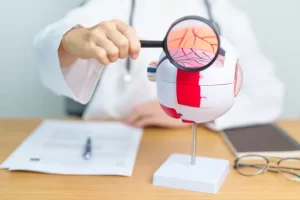
With over 20% of people with scleroderma also suffering from lupus, scleroderma is seen as one of the most common diseases to overlap with lupus. To better understand how to deal with these diseases, you need to learn about both of them individually.
The best way you can do that is to simply talk to your doctor. You can check out the lupus treatment in Brisbane performed by arthritisCARE. After a thorough examination, your doctor will tell you more about your condition, and what the appropriate treatment is.

Lupus and scleroderma can be difficult to diagnose
Overview
Scleroderma is a rare condition, that happens when the immune system attacks its healthy tissues by mistake. It can lead to damage and scarring on the skin, in some cases even other organs. People who have this immune disorder, could have other autoimmune diseases, such as lupus.
What are the symptoms?
More often than not, scleroderma and lupus symptoms will overlap with one another, which will complicate the diagnosis. With that said, one of the most common symptoms of lupus is muscle and joint pain, as well as weakness and tiredness. But, there are other symptoms that could occur, such as seizures, sensitivity to light, headaches, problems with kidneys, skin rash, and others.
Read more about Black Friday Massage Chair Deals By The Modern Back At The Best Prices At Boynton Beach And Sarasota In Florida
Symptoms that overlap with each other are:
- Raynaud’s phenomenon; having poor circulation that will cause cold fingers and toes that are very painful.
- Esophageal dysfunction; a dysfunction of your digestive system.
- Sjögren’s Syndrome; affecting glands that are in charge of producing fluids, like tear and saliva glands.
Diagnosis and treatment
Often times, people will get misdiagnosed when it comes to lupus and scleroderma. Diagnosis normally involves having a thorough physical exam, where your doctor will take a close look at your medical history and your current and previous symptoms. If you have similarities with the diseases, you will be sent to have a variety of blood tests done.
The treatment is different for each individual. Everyone will react to each treatment differently, and sometimes a combination of more treatments can give you the best outcome. Lupus and scleroderma are not curable, but they can be kept under control.
Every doctor has a different approach to the diagnosis and treatment, so do not hesitate to ask for a second opinion if you are not comfortable with what your doctor suggested. If you are interested in knowing more, you can visit https://arthritiscare.com.au/service/scleroderma or simply schedule a consultation with a doctor who has a good reputation.

Lupus and scleroderma can be managed
Final word
There are many things to be considered, when a doctor is trying to diagnose lupus or scleroderma. Although these diseases cannot be cured, they can be managed, which is why it is important that you openly talk to your doctor. Tell him/her about your symptoms, and follow their orders when it comes to treatment. If you have any doubts or questions, do not hesitate to ask your doctor.







